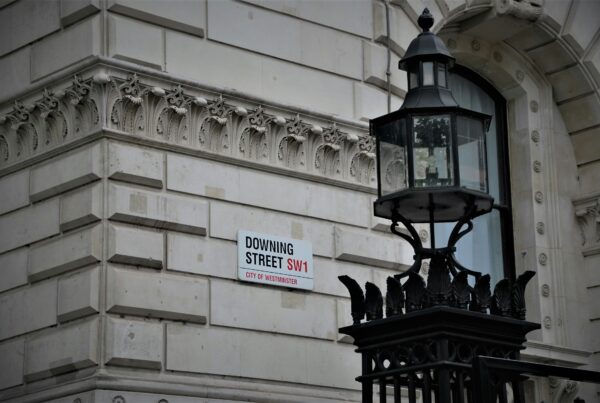Bright Blue: Reduce the rate of National Insurance on employers
Bright Blue, the independent think tank for liberal conservatism, has today published a major new report commissioned by its high-profile cross-party, cross-sector Tax Commission, entitled Rightfully rewarded: reforming taxes on work and wealth. The report proposes reforms to the new Health and Social Care (HSC) Levy and National Insurance Contributions (NICs) to reduce the overall level of taxation on work alongside changes to Capital Gains and Inheritance Tax to increase the overall level of taxation on wealth.
This report is guided by two key principles. First, that the UK should lower taxes on an individual’s work to aid post-COVID economic growth and reward effort and enterprise. Second, that the UK should increase taxes on an individual’s wealth to some extent to offset in part the losses in revenue from lowering taxes on work, as well as respond to rising wealth levels and the increasing role of luck and inheritance in life outcomes.
The new Health and Social Care Levy that comes into force this year was a significant and surprising tax rise for a Conservative Government to implement. It cannot be abolished, but it can be made much fairer. Any detrimental impact on workers and employers can be mitigated.
The revenue implications of the policies we are proposing are uncertain; they depend on the rates and rules set by policymakers and the behavioural responses of those affected. But, overall, we are suggesting that reforms should aim for revenue neutrality in the short-term. But the long-term reward would be a tax system that makes the UK more efficient and equitable.
Sam Robinson, Senior Researcher at Bright Blue, commented:
“Though the public finances need to be repaired in the wake of the pandemic, simply squeezing more money out of the tax system without improving its design would be a mistake. The Government should not pass up the opportunity to recalibrate the tax system to better reward work and effort while responding to the rising importance of wealth and inheritance in life outcomes.”
Ryan Shorthouse, Chief Executive at Bright Blue and co-author of the report, commented:
“A centre-right Government that is committed to ‘levelling up’ the UK should rebalance the tax system from income associated with work and effort and onto income associated with privilege and luck.”
Bright Blue’s key recommendations for reforming the taxation of work and wealth are as follows:
Taxes on an individual’s work
Tax-cutting
- The Government should prioritise significantly lowering the rate of the employer element of the HSC Levy from 1.25% on income above the existing employer NICs threshold as soon as possible. Then, if the public finances allow, the rate of employers NICs should then also be cut. This would likely result in economically beneficial outcomes in the long term, either through increased employment, higher wages among employees, reduced overhead costs for businesses, or a combination of these effects. Focussing on cutting the employers aspect of the Health and Social Care Levy first, rather than the self-employed and consequently employee aspects, will thus help to narrow this concerning discrepancy in total tax take between the two employment statuses, whilst also supporting – as the evidence suggests – the take-home pay of employees.
Revenue-raising
- The Health and Social Care Levy should be broadened to apply to pensions and rental income. This is because the Health and Social Care Levy has widened several other dividing lines within the tax system. First, by exempting pension income, the measure has also increased the gap in tax rates between different age groups. Second, it further exacerbates the difference in tax rates that different forms of income attract. This is one of several reforms that could offset the short-term cost of reducing the employer rate of the Health and Social Care Levy.
- End the exemption from Class 1, 2 and 4 National Insurance Contributions (NICs) for those working above the State Pension Age (SPA). Continuing to exempt those working above the SPA from employee and self-employed NICs ignores a long-term structural increase in people working past retirement age. Raising revenue from this group will help offset the reduction in the employer aspect of the HSC Levy, but it will also address a structural anomaly in the tax system.
Taxes on an individual’s wealth
Revenue-raising
- To reduce the discrepancy between tax on capital gains and tax on earnings, the Government should narrow the gap in headline rates between CGT and Income Tax, by creating two main rates for all capital gains of 18% at the basic rate and 28% at the higher rate, with modifications only for assets that have already paid Corporation Tax. The distinction between standard CGT rates and rates applied on residential property or carried income should end, as well as Business Asset Disposal (BAD) Relief and Investors’ Relief. This would collapse the rate structure of CGT from four distinct rates to two rates: an 18% basic and a 28% higher rate. While this approach would narrow, and not eliminate, the discrepancy in tax rates between CGT and Income Tax, it would represent a simplification compared to the current system.
- The Government should end the CGT base cost uplift on death, meaning CGT liability will be assessed on the uplift in the value of assets from when they were acquired rather than their present value. If someone received an asset that was originally bought by the deceased at £100 but was now worth £300, under the current system they would be treated as having acquired the asset at its current market value of £300, thus making their tax liabilities lower. If the base cost uplift on death was abolished, then the person inheriting the asset would instead be treated as having acquired it at its original cost of £100. Therefore, if they were to sell it, they would be liable to higher CGT because of the higher uplift in value.
- Replace Inheritance Tax with a Lifetime Receipts Tax (LRT). The LRT should have a starting lifetime allowance of £125,700. The headline rates should mirror Income Tax rates from now, with the threshold set at ten times the Income Tax salary thresholds. This would represent a move back to the system that existed prior to 1986. A tax that applies to lifetime gifts, and not just gifts bequeathed after (or near) death, would end the arbitrary distinction between the timing of gifts. By reducing exemptions and reliefs, it would minimise the distortions currently present in IHT. This would also reduce the abilities of wealthier estates to minimise effective tax liabilities, thereby ensuring that inheritances are taxed more progressively.
- Business Property Relief and Agricultural Property Relief in IHT, or the new LRT, should only apply where the donor had a significant working relationship with the business or farm and for at least two years after acquisition. Under this system the donor would need to demonstrate that they owned, worked for, or had significant control in the company or farm to qualify for tax relief on the assets in scope. Relief would be given upfront, but clawed back if the business was sold or wound down less than two tax years after it was inherited. This would aim to ensure that what is being passed on is genuinely a family business.
Tax cutting
- To ensure that CGT targets only the real returns to investments, and does not punitively target paper gains, narrowing the gap between CGT and Income Tax rates should be paired with the reintroduction of inflation indexation on CGT liabilities. Given the behavioural impacts that a rise in CGT rates could have on investment and on tax revenues, rate rises – which dampen investment incentives – must be paired with offsetting measures that improve the design of the tax base to protect the real value of investments. Indeed, a focus on targeting the real value of investments is especially relevant given recent spikes in inflation.
- Capital losses should be able to be carried back for up to three years and set against taxable income with relief restricted to CGT rates. Investors are currently restricted in how they can offset capital losses. Capital losses can be set against capital gains in the current tax year, or carried forward to future tax years. Capital losses cannot normally be set against income, unless the loss was on shares in unlisted companies. In principle, there is no reason why capital loss offsets could not be extended to cover a wider range of assets and a wider period. A number of other countries, including Germany and Canada, allow capital losses to be carried back to previous tax years after they have been offset against the current tax year.
The Rt Hon Dame Margaret Hodge MP, Chair of the Public Accounts Committee, commented:
“This important research from Bright Blue is a step in the right direction towards a fairer and more sustainable model for funding our creaking social care system. The Government’s new levy on National Insurance Contributions is one of the least equitable options for raising the necessary resources. Whilst I would advocate for even more radical reform, these new recommendations will rightly open up debate on how we could fairly taxing income from wealth as well as work.”
The Rt Hon Lord Willetts, former Minister of State for Universities and Science, commented:
“There is a lot of debate on the total burden of taxation but whatever the total raised we also need to get the right balance between different forms of taxation. We may be taxing earnings too heavily relative to assets, whose value has surged. This valuable report puts forward some interesting ideas for getting that balance right.”
The Rt Hon Sir Vince Cable, former Leader of the Liberal Democrats and Secretary of State for Business, Innovation and Skills, commented:
“The fiscal ravages of the pandemic are going to require more tax revenue. Politics and economics alike will prevent reliance on spending cuts. Bright Blue has performed a valuable service by asking how a centre-right government could reform taxation in a way that incentivises work and risk-taking but takes more from undertaxed stocks of wealth.”
John Stevenson MP, Member of the Taxation APPG, commented:
“This is a very interesting report with much to recommend it. In particular I firmly believe that the priority should be to reduce income tax particularly on the lower paid. To compensate I see no reason why there should not be changes to Inheritance Tax and the proposals are close to the changes I would like to see which would be fairer for all concerned”
ENDS
- This report is part of Bright Blue’s project on tax reform, which is kindly supported by the Joffe Trust and Social Enterprise UK.
- This report has been commissioned by a high-profile cross-party, cross-sector commission established by Bright Blue to advise on reforms to the tax system in the years ahead to support the post-Covid economic recovery, the restoration of the public finances, and the achievement of better economic, social and environmental outcomes. Bright Blue has commissioned experts to provide original analysis and policy recommendations in four areas of tax policy: carbon taxation, property taxation, business taxation, and work and wealth taxation.




